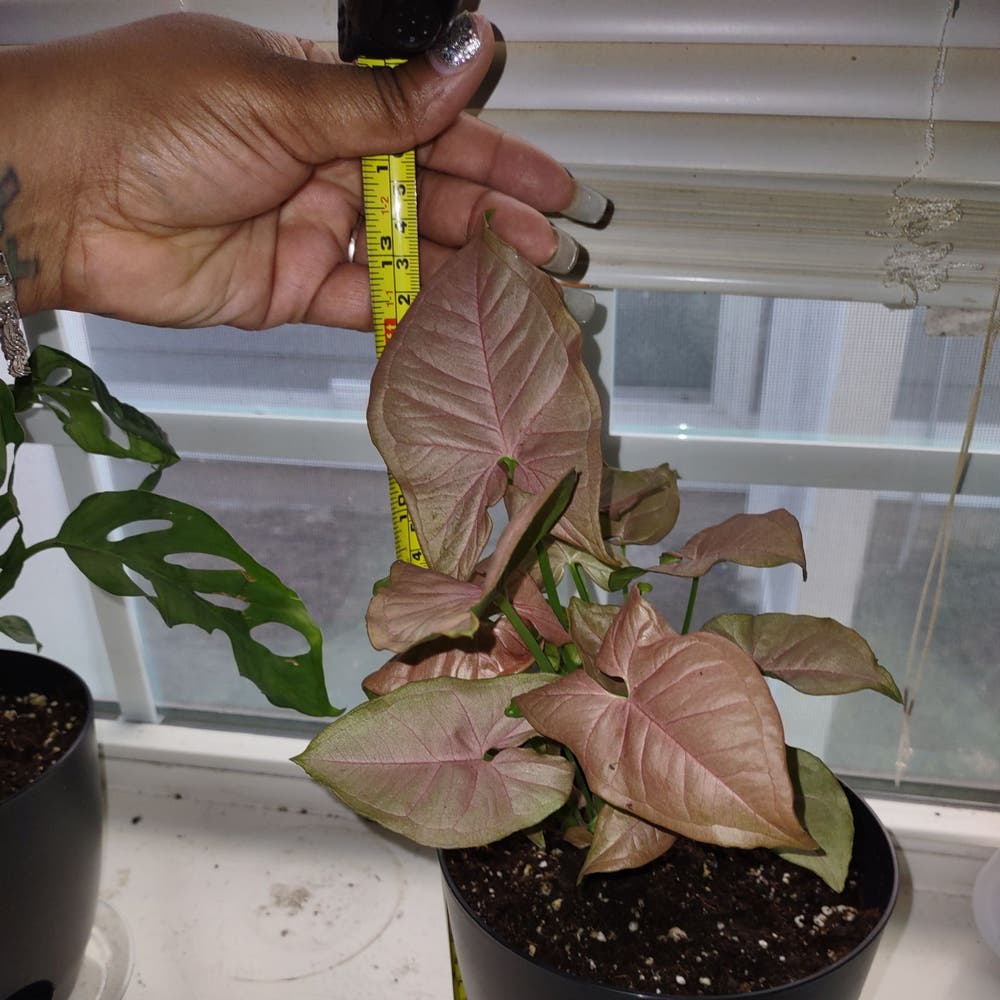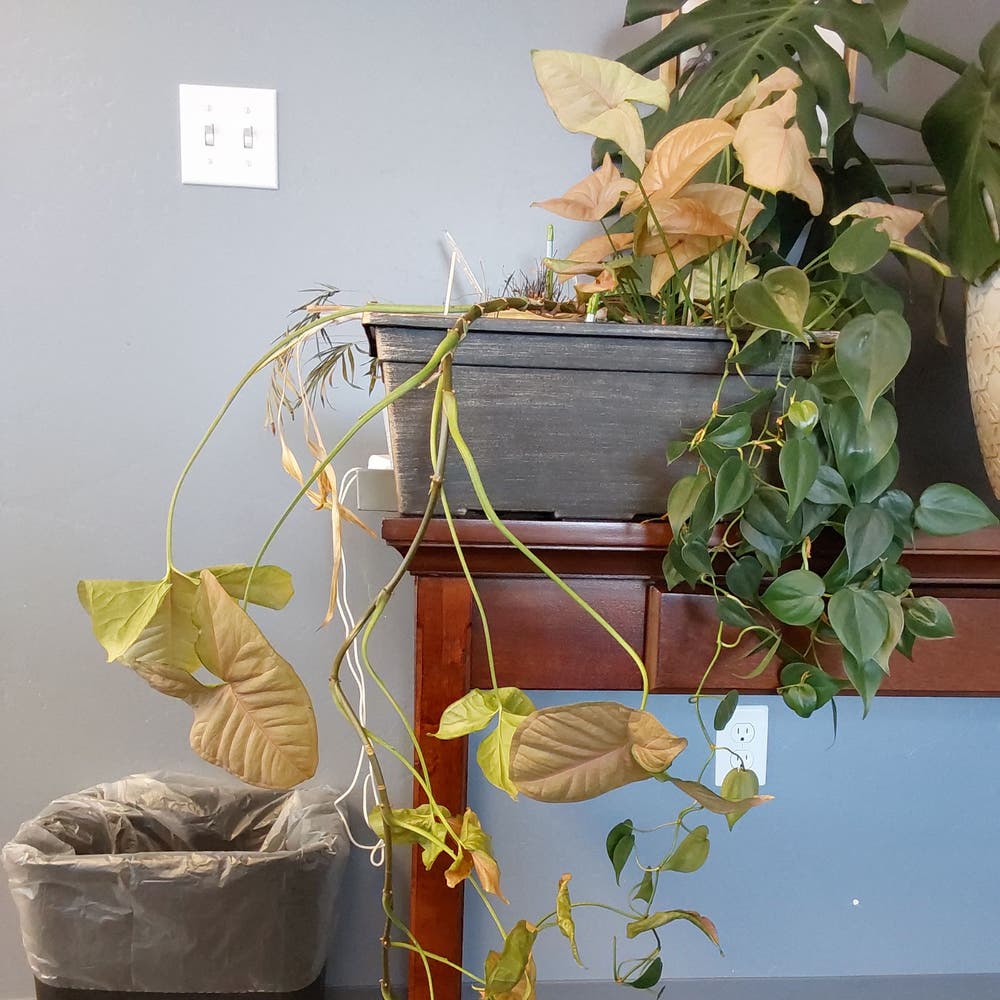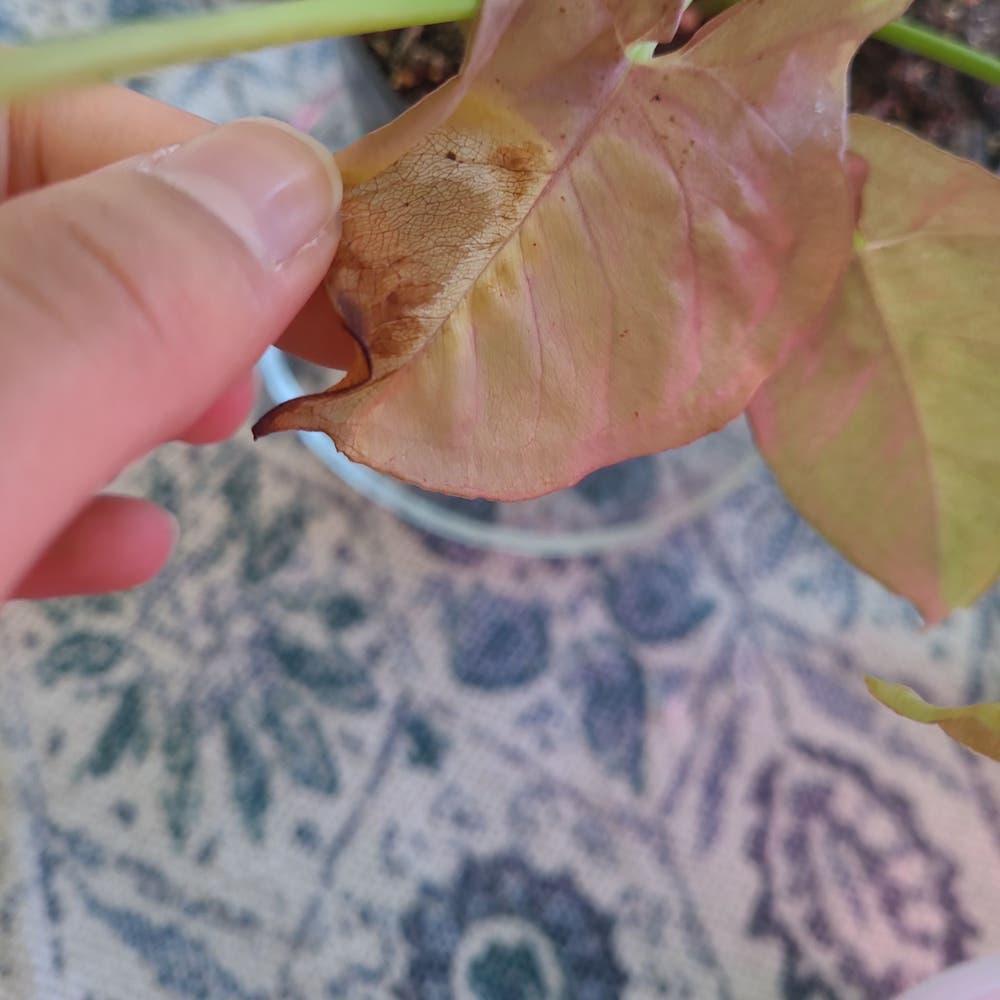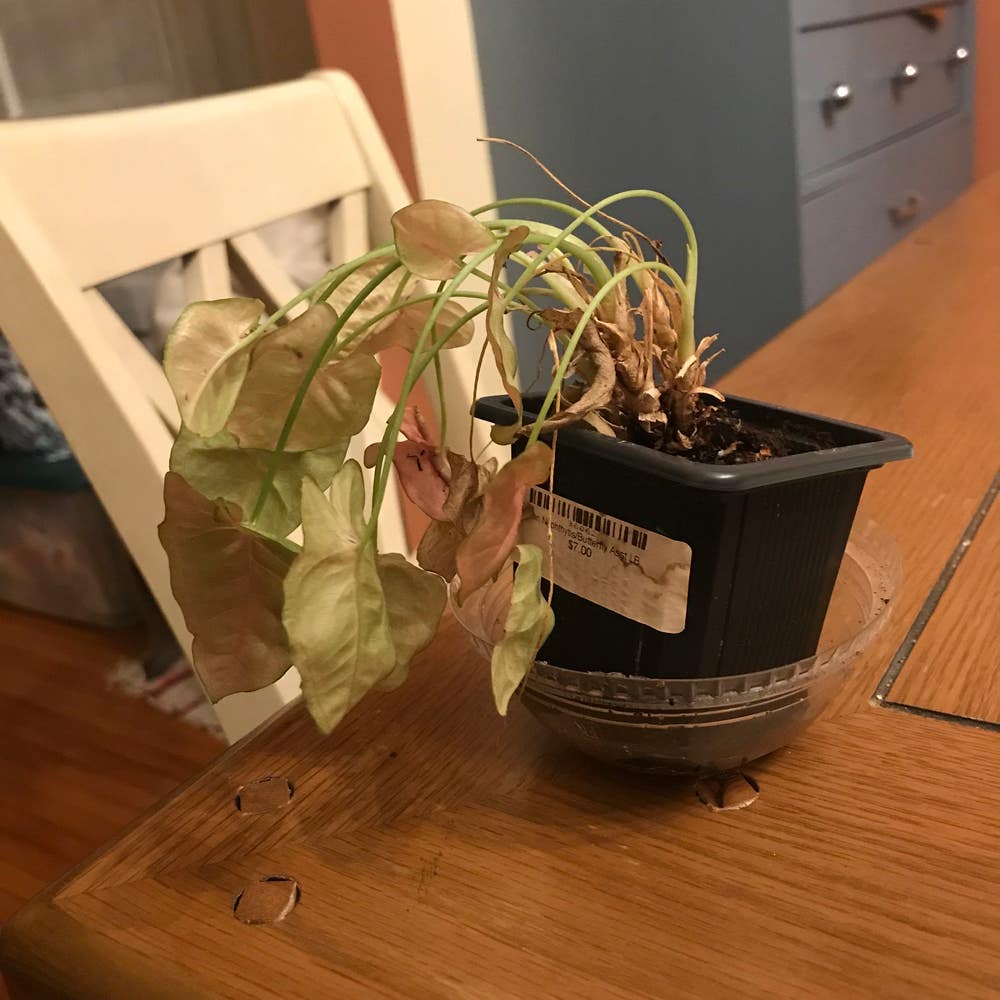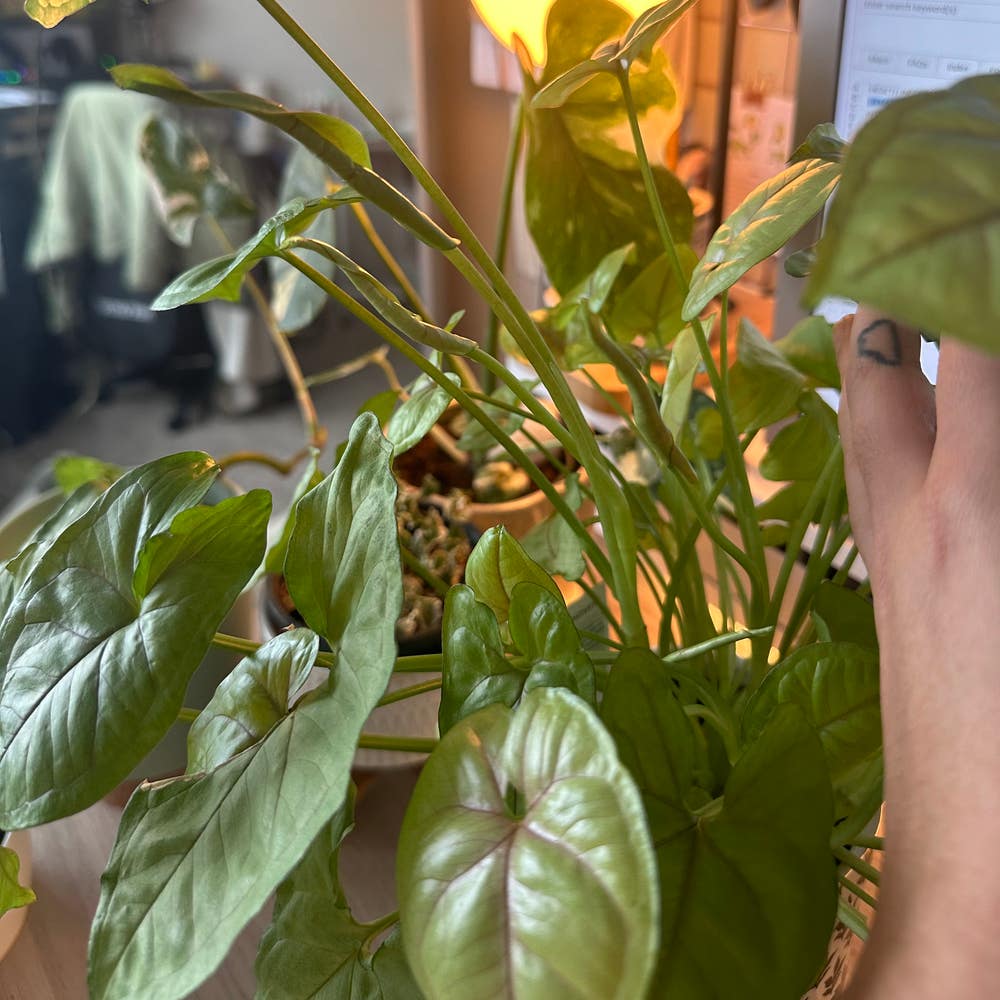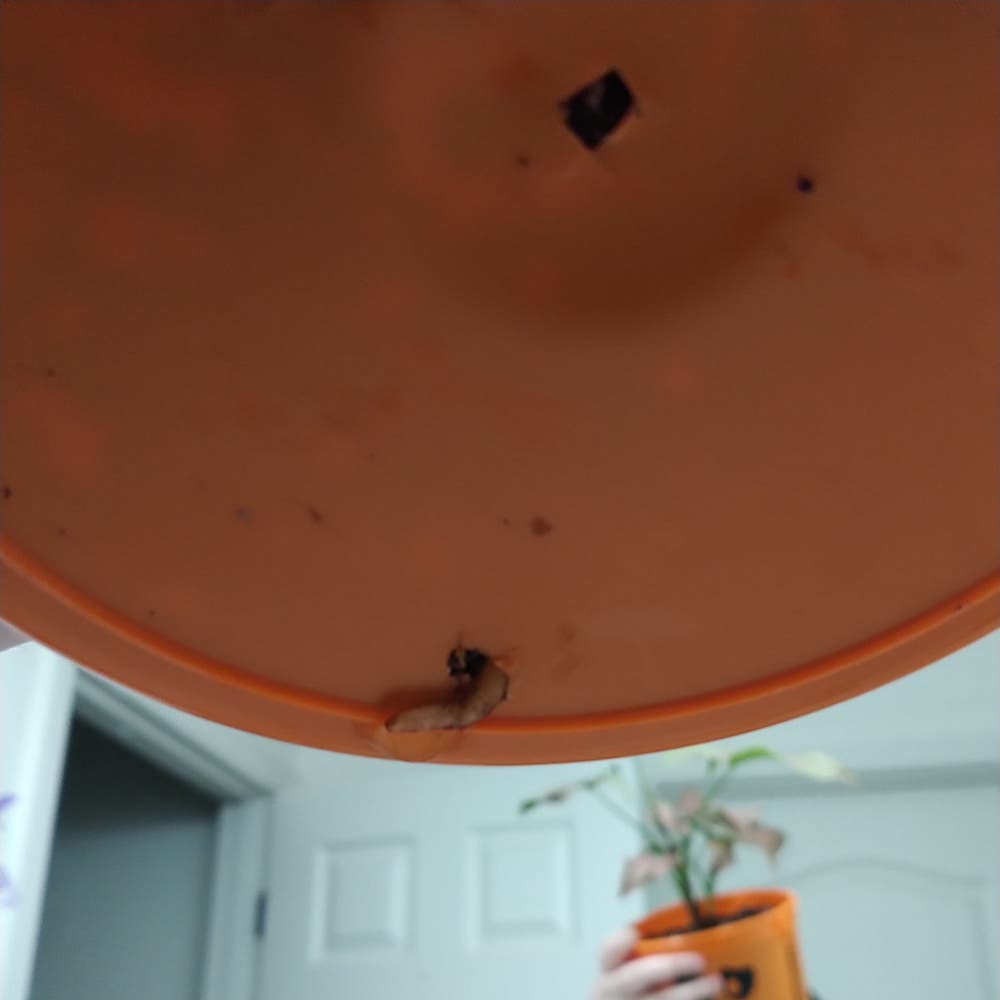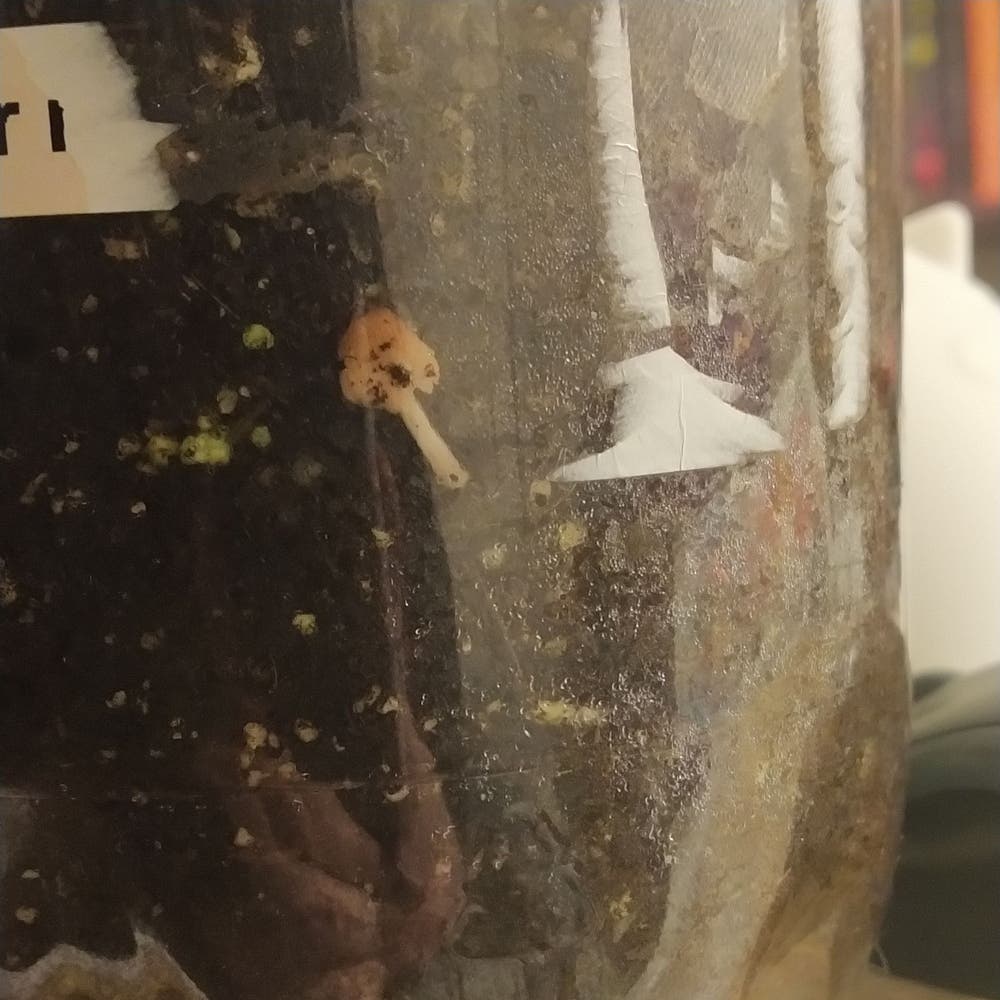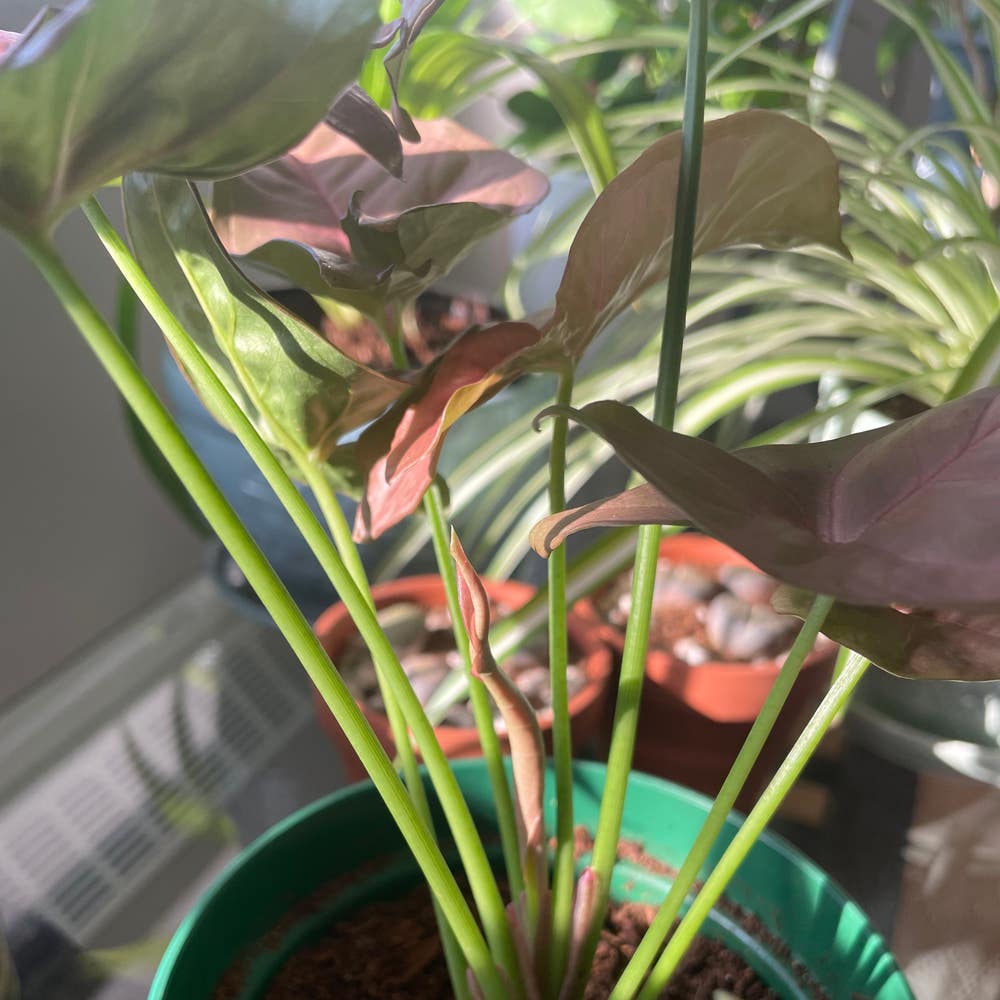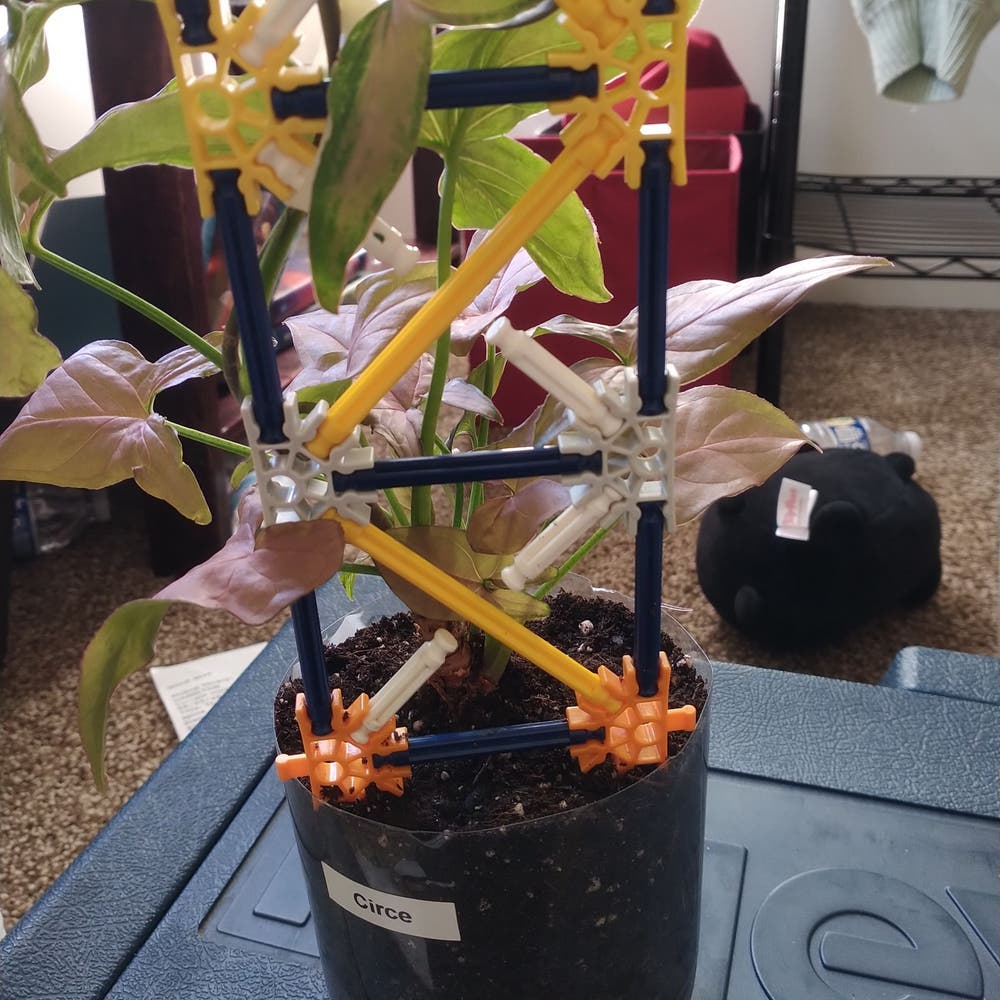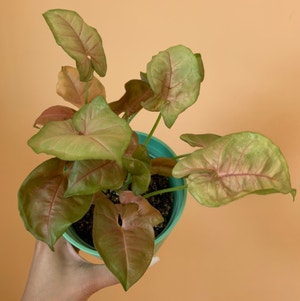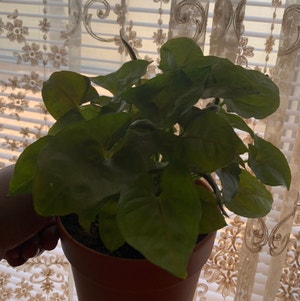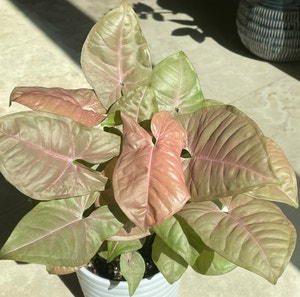
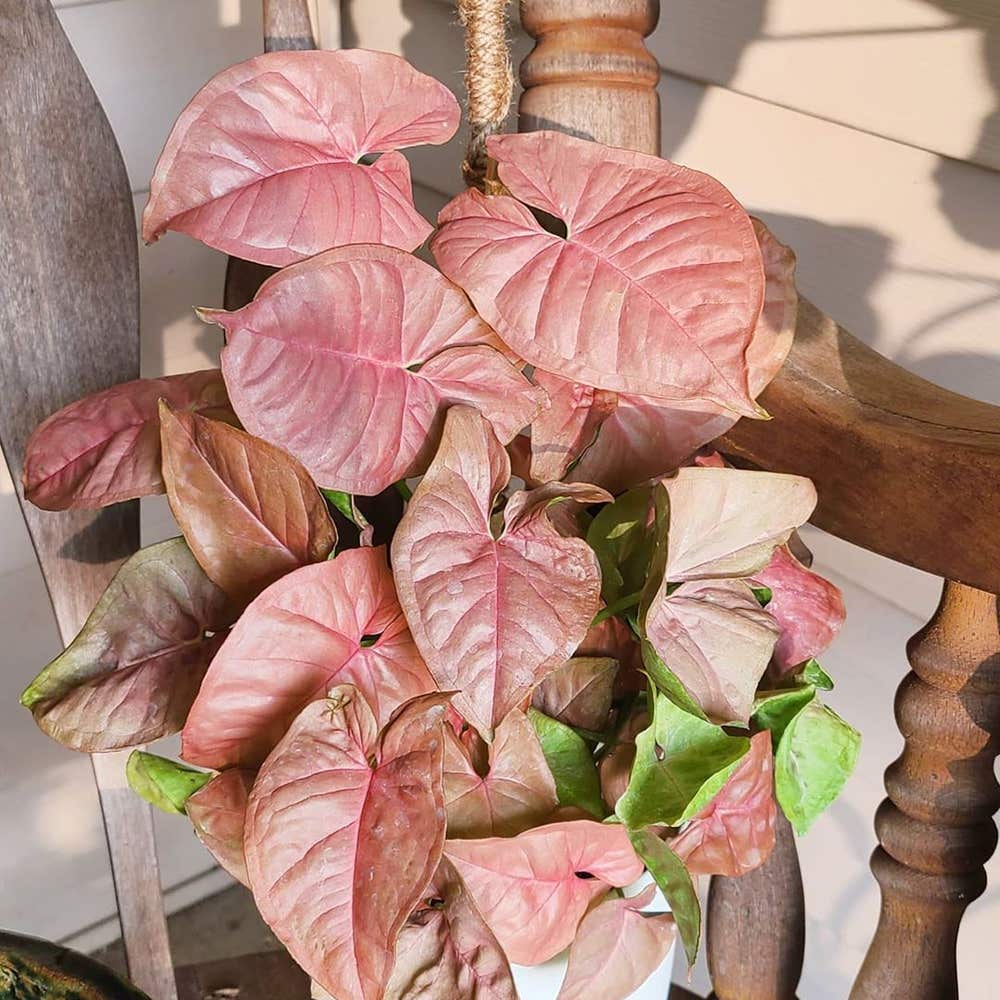



































Pink Syngonium

4.7 out of 5 (12 experiences)
 Survivor
Survivor
 Fast grower
Fast grower
About Pink Syngonium
Syngonium podophyllum is a popular, easy-to-care-for houseplant with beautiful arrowhead shaped leaves. You’ll often see these plants grown in their juvenile stage, but given something to climb on and abundant sunlight you may see them mature into their adult stage! The leaf shape changes as they mature and may even appear to split into three individual leaves. In the wild they can climb up to 65 feet tall. Be sure to handle them with care, as their sap contains oxalic acid which can be very irritating to the skin and eyes. 👀
Taxonomy

Syngonium podophyllum 'Pink'
Syngonium
Araceae
Alismatales

How to care for Pink Syngonium
How often to water your Pink Syngonium

every 9
Pink Syngonium needs 0.5 cups of water every 9 when it doesn’t get direct sunlight and is potted in a 5" pot.
Use our water calculator to personalize watering recommendations to your environment or download Greg for more advanced recommendations for all of your plants.

Water 0.5 cups every
9
Finding light for Pink Syngonium in your home

a window
Pink Syngonium can tolerate being far from a window and light source.
Place it less than 6 feet from a south-facing window to ensure it receives enough light to survive 💪.
Select your region to see how the current weather in your area affects the placement of Pink Syngonium in your home 🏡.
How to fertilize Pink Syngonium

Most potting soils come with ample nutrients which plants use to produce new growth.
By the time your plant has depleted the nutrients in its soil it’s likely grown enough to need a larger pot anyway.
To replenish this plant's nutrients, repot your Pink Syngonium after it doubles in size or once a year—whichever comes first.
-
Need some syngonium advice! #Syngonium My pink syngonium has a new furled leaf that’s really struggling to unfurl, and a yellowing leaf off to the side. Usually when it hits this stage of growth, I start to see a lot of stagnation and am not sure how to get it to thrive and grow better. Does it need repotting? A larger pot? Any other advice? I have no clue how people get theirs to be so bushy and full!
-
Absolutely love her
-
Is this pink syngonium supposed to vine? Should I cut it back and try to re populate it? #Syngonium
-
Help! My syngonium has translucent brown patches on some of the leaves, what do I do?! I keep it infront of a window (not much light) and it is near my grow lights as well I watered it a while ago and am letting it dry out just a tad till the next watering I also repotted it into a bigger pot when I first got it!
-
plant is drooping i dont know why :( i havent changed anything like ive been keeping him in the same area since i got him almost 2 years ago and i havent changed the watering schedule but he looks like this now :( i havent fully checked for root rot but i smelled the dirt and it smelled really good and healthy so i dont think thats whats happening... usually when it droops like this i give it water and it perks back up right away but its been like this for more than a week now even though i watered it :( does anyone know what i should do to save it?
-
Some more #FreshLeafFriday 🌱 #syngonium #SwissCheeseVine #Monstera
-
I just repotted Circe on the 1st and she's growing through the bottom of her pot again
-
Mushroom?? Was checking if I needed to water Circe and there's a mushroom. Just a random mushroom growing against the plastic. No clue why it's here or how it's surviving
-
my pink syngonium is in the process of unraveling its 10th leaf !🫶🏻 how exciting :)
-
Showing off a stand I made with kinex to keep my plant up since I didn't have a trellis or pole or anything like that
Care Summary for Pink Syngonium

Pink Syngonium
 Greg recommends:
Greg recommends:
 Water
Water
0.5 cups every 9 days
 Placement
Placement
< 6ft from a window
 Nutrients
Nutrients
Repot after 2x growth
Based on the 4” pot your plant is in, and that it doesn’t get direct sunlight.

What other plant parents say
 Survivor 9
Survivor 9
 Fast grower 8
Fast grower 8
 Easy to propagate 3
Easy to propagate 3
 Large, lush leaves 3
Large, lush leaves 3
 Blooms easily 2
Blooms easily 2
 Browns easily 2
Browns easily 2

 Trending in your area
Trending in your area
 Similar to Pink Syngonium
Similar to Pink Syngonium

Alocasia 'Dragon Scal…

Alocasia Fairy

Alocasia Jacklyn

Alocasia Golden Lutea

Alocasia Calfornia Go…

Aglaonema 'Golden Flu…

Alocasia brancifolia

alocasia jacklyn

Aglaonema rotundum 'P…

Alocasia Corazon

Aglaonema 'Red Zircon'

Aglaonema 'Golden Bay'

Alocasia Dawn Variega…

Aglaonema 'Sparkling …

Aglaonema 'Yellow Coc…

Alocasia
✨ Discover rare plants

Chinese Evergreen 'Ga…

Vatricania guentheri

Tuber Fleeceflower

Thelocactus macdowell…

Hoya kalimantan

Parrot Pitcher Plant

Peperomia 'Harmony's …

Pine Cone Plant

White Apple Moth Orch…

Blushing Aeonium

Sarcochilus fitzgeral…

Pseudorphipsalis 'Blu…

Lavandula Pedunculata

Chandelier Plant

Christmas Candle

Bonsai Crassula

Philodendron 'Gabby'


